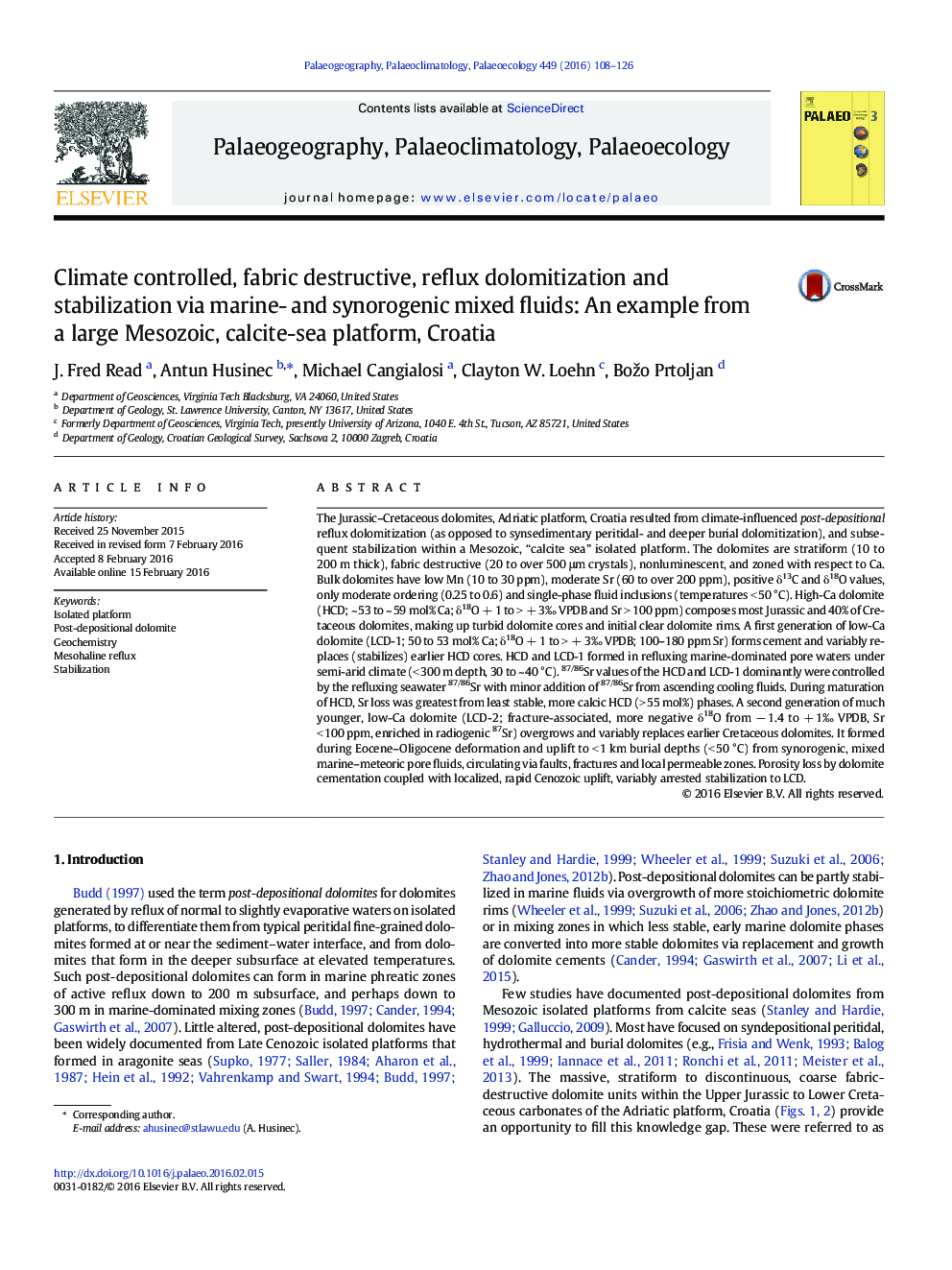| Article ID | Journal | Published Year | Pages | File Type |
|---|---|---|---|---|
| 4465754 | Palaeogeography, Palaeoclimatology, Palaeoecology | 2016 | 19 Pages |
•Post-depositional dolomitization of a Mesozoic calcite-sea isolated platform•Climate related post-depositional dolomites superficially resemble late dolomites.•Refluxing waters were mesohaline marine fluids.•Variable stabilization in marine reflux- and later synorogenic fluids
The Jurassic–Cretaceous dolomites, Adriatic platform, Croatia resulted from climate-influenced post-depositional reflux dolomitization (as opposed to synsedimentary peritidal- and deeper burial dolomitization), and subsequent stabilization within a Mesozoic, “calcite sea” isolated platform. The dolomites are stratiform (10 to 200 m thick), fabric destructive (20 to over 500 μm crystals), nonluminescent, and zoned with respect to Ca. Bulk dolomites have low Mn (10 to 30 ppm), moderate Sr (60 to over 200 ppm), positive δ13C and δ18O values, only moderate ordering (0.25 to 0.6) and single-phase fluid inclusions (temperatures < 50 °C). High-Ca dolomite (HCD; ~ 53 to ~ 59 mol% Ca; δ18O + 1 to > + 3‰ VPDB and Sr > 100 ppm) composes most Jurassic and 40% of Cretaceous dolomites, making up turbid dolomite cores and initial clear dolomite rims. A first generation of low-Ca dolomite (LCD-1; 50 to 53 mol% Ca; δ18O + 1 to > + 3‰ VPDB; 100–180 ppm Sr) forms cement and variably replaces (stabilizes) earlier HCD cores. HCD and LCD-1 formed in refluxing marine-dominated pore waters under semi-arid climate (< 300 m depth, 30 to ~ 40 °C). 87/86Sr values of the HCD and LCD-1 dominantly were controlled by the refluxing seawater 87/86Sr with minor addition of 87/86Sr from ascending cooling fluids. During maturation of HCD, Sr loss was greatest from least stable, more calcic HCD (> 55 mol%) phases. A second generation of much younger, low-Ca dolomite (LCD-2; fracture-associated, more negative δ18O from − 1.4 to + 1‰ VPDB, Sr < 100 ppm, enriched in radiogenic 87Sr) overgrows and variably replaces earlier Cretaceous dolomites. It formed during Eocene–Oligocene deformation and uplift to < 1 km burial depths (< 50 °C) from synorogenic, mixed marine–meteoric pore fluids, circulating via faults, fractures and local permeable zones. Porosity loss by dolomite cementation coupled with localized, rapid Cenozoic uplift, variably arrested stabilization to LCD.
